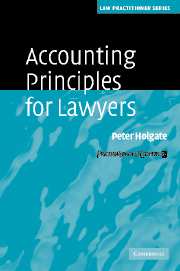Book contents
- Frontmatter
- Contents
- Acknowledgements
- Glossary of terms
- Part I The accounting environment
- 1 Introduction
- 2 UK GAAP and international harmonisation
- 3 The legal framework for accounting
- 4 Substance over form
- 5 The accounting profession and the regulatory framework for accounting and auditing
- 6 Communicating accounting information
- 7 Current trends in accounting
- Part II Some specifics
- Appendices
- Index
6 - Communicating accounting information
from Part I - The accounting environment
Published online by Cambridge University Press: 28 July 2009
- Frontmatter
- Contents
- Acknowledgements
- Glossary of terms
- Part I The accounting environment
- 1 Introduction
- 2 UK GAAP and international harmonisation
- 3 The legal framework for accounting
- 4 Substance over form
- 5 The accounting profession and the regulatory framework for accounting and auditing
- 6 Communicating accounting information
- 7 Current trends in accounting
- Part II Some specifics
- Appendices
- Index
Summary
Background
The Companies Act 1985 requires that all British companies prepare annual accounts, send them to shareholders and file them on the public record at Companies House. There are some exemptions from these basic requirements; for example, certain smaller companies can file abbreviated information at Companies House.
However, this chapter is primarily concerned with listed companies. In addition to the requirements of the Companies Act, they have to comply with the Listing Rules. In connection with periodic financial reporting, their requirements include:
Selected additional disclosures, for example relating to corporate governance matters.
Release of interim results, generally for the first six months of the year. (Companies listed in the US have to publish interim results every quarter.)
Release of preliminary announcement of annual results (often referred to as the ‘prelims’).
The corporate reporting supply chain
In practice, many groups of people are involved in the reporting process for listed companies – or the ‘corporate reporting supply chain’, as it has been called by the recent book, Di Piazza and Eccles, Building public trust: the future of corporate reporting (New York: John Wiley & Sons Inc., 2002). This may be shown as indicated in Figure 6.1.
Figure 6.1 illustrates the roles and relationships among the various groups and individuals involved in the production, preparation, communication and use of corporate reporting information. Company executives and boards of directors have responsibility for preparing or approving the information that companies report.
- Type
- Chapter
- Information
- Accounting Principles for Lawyers , pp. 64 - 68Publisher: Cambridge University PressPrint publication year: 2006



